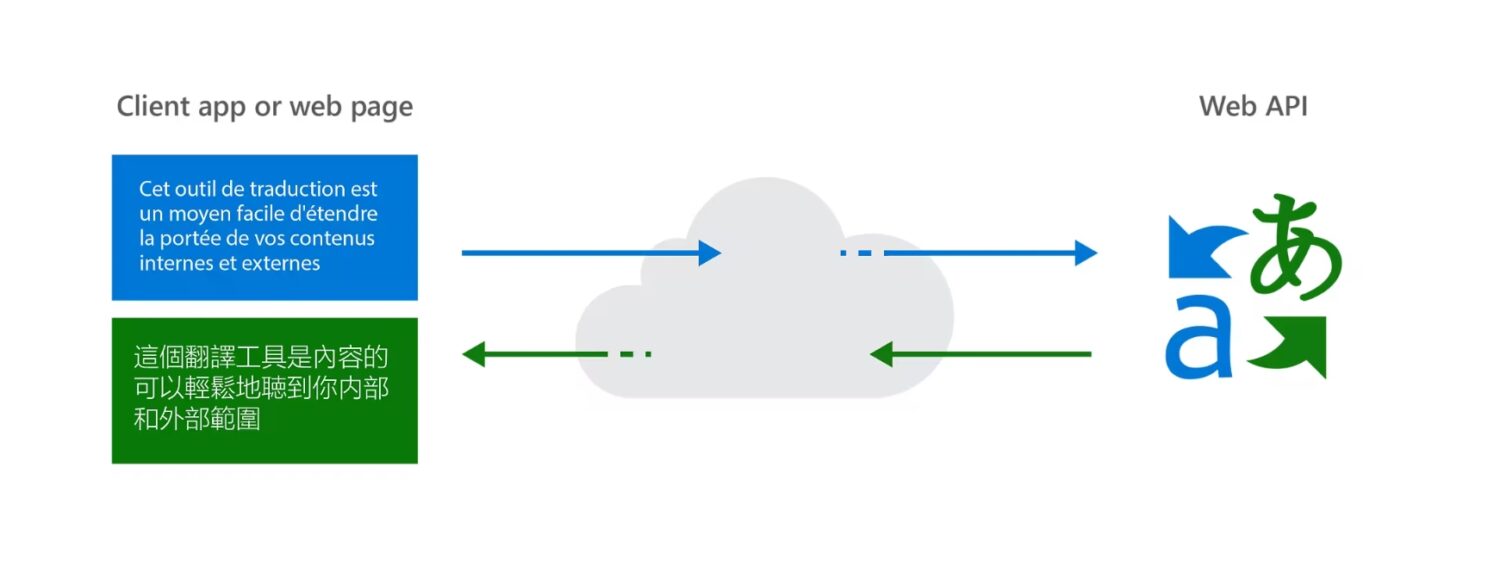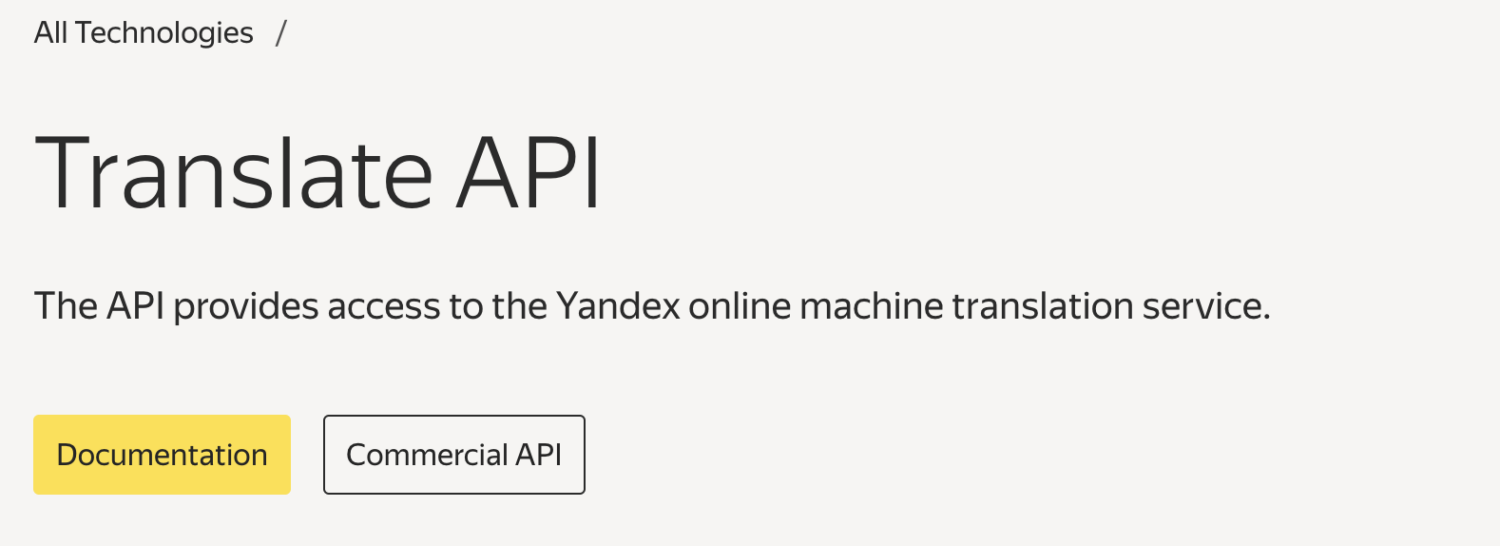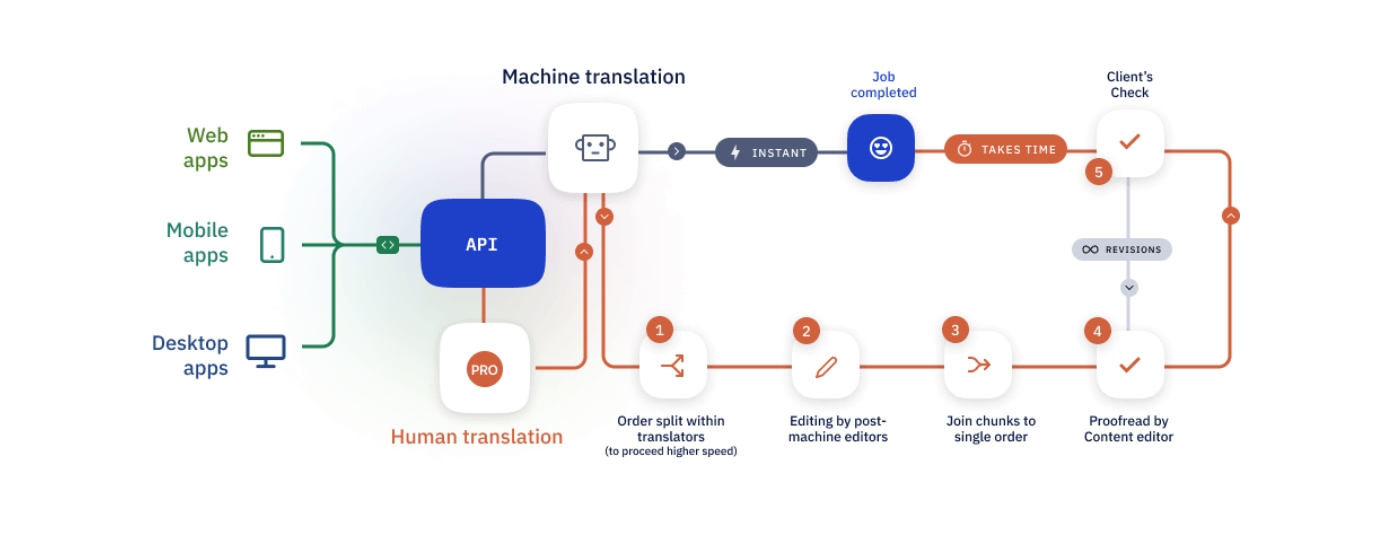In today’s modern world, where everything is connected, it makes no sense to build a website or an application that can be accessed in just one language.
To reach a global target audience, businesses must make their products and services accessible in multiple languages. But how can they do so? Isn’t it exhausting to create multiple pages for every language manually?
That’s where translation APIs come into action.
Translation API: An Overview
A translation API allows you to translate your application or website content programmatically. It connects your application to a translation platform or a service seamlessly by abstracting the process of dealing with the translation service manually.
To summarize, here are the benefits of making your application multilingual by using a translation API:
- Global Target Audience: By making your application multilingual, you remove the language barrier. That is especially important for global businesses targeting a much wider audience.
- Localization: The concept of localization is about catering to your target audience in their local language. With the help of it, businesses can make their products more personalized.
- Analytics: You can analyze your application performance after making it multilingual and improve your services based on local preferences.
Depending on a particular provider, translation APIs may offer various services and customization options. For instance, you may use various APIs to perform language identification, get alternative translations, set translation quality levels, etc.
Want to know more about different translation APIs? Here is a list of some of the translation API platforms.
Google Cloud Translation API

Google Cloud offers a translation API which uses a pre-trained Neural Machine Translation model to translate text. It updates this NMT model on a regular basis to incorporate better techniques and training data.
The API can translate your content to and from around 100 language pairs with unlimited character translations per day. Not only that, it can detect the current language automatically and translate it accordingly. Currently, it supports around 135 languages.
It provides two editions: Cloud Translation Basic & Cloud Translation Advanced. The advanced edition has the upper hand over the basic edition in terms of features like adding glossaries and custom ML models.
Azure Translator
Azure Translator is an AI service for real-time text translation. The API for text translation is known as Azure Text Translation API, and it supports over 100 languages. It can translate, transliterate and detect source languages.
In order to access the API, you need to create a Microsoft as well as Azure account, generate a translator REST API resource on the Azure portal, get your API access keys, and choose a programming language of your choice from a list of supported languages. Supported programming languages include C#, Go, Java, Javascript, and Python.

There is also a no-translate feature, which lets you prevent a piece of text to not be translated. You can just add a notranslate class to your HTML or set the translate attribute to “no” just like this – translate="no".
The translator service offers a free plan and a pay-as-you-go option for catering to your specific business needs.
DeepL API
DeepL is a machine translation technology that provides an API to integrate it with websites and applications. Use cases of DeepL include website content translation, internal company communications for multinational companies, and creating multilingual products.

It provides a secure way to translate your content without persisting any information and using it to train AI models. It also adheres to EU data protection laws.
DeepL offers two plans, one free and a pro plan. With the free plan, you can only translate up to 500,000 characters per month. The good thing about the pro plan is that it’s based on usage-based pricing. One disadvantage of DeepL is that it’s only available in selected countries.
Yandex Translate API
Yandex Translate API provides all the basic features you would expect from a translation service. It also has a playground where you can test the API.

It uses a translation service developed by Yandex itself and supports more than 90 languages. Yandex API response is available in three formats – XML, JSON, and JSONP.
The biggest disadvantage of using this API is that it’s very basic and doesn’t include enough features.
LibreTranslate
LibreTranslate is an open-source machine translation API. It’s free for testing, personal or infrequent use and comes under an AGPLv3 license.

For production use cases, you can host your own instance of LibreTranslate on a server and access it using an API key.
In terms of features, it only provides text and file-based translation using a REST API documented on Swagger. It’s a very simple API with a bunch of simple endpoints allowing you to get your job done.
However, it doesn’t offer more advanced features and only supports around 30 languages. You can retrieve the list of supported languages by hitting this endpoint.
Translated

Translated API is a simple and powerful way to programmatically translate content using Translated services in over 200 languages. It also offers a dashboard to monitor all the API requests sent to TranslationOS endpoints.
Some of its features include advanced repetition leveraging, including ICE and SPICE matching against prioritized private translation memories and machine translation, string segmentation, extraction, and reinsertion in 71 file formats, translation monitoring, including real-time progress, quality assurance, and a free migration plan.
Systran Translate
As a machine translation service, Systran provides an API to make your website multilingual with real-time translation in over 50 languages. You can use it to translate your internal and external applications, customer service platforms, product interfaces, web pages, etc.

Systran provides a free trial of its API for 14 days and up to 500,000 characters. It is a GDPR-compliant API beneficial for large corporate clients and governments that have the highest expectations when it comes to data security.
Amazon Translate
Amazon Translate is a neural machine translation service that delivers fast, affordable, and customizable language translation for around 75 languages.
It uses Active Custom Translation (ACT) technology to customize your Amazon Translate output without building or maintaining a custom translation model. It can also identify languages automatically if not specified.

The biggest benefit of using Amazon Translate is the ecosystem it provides for seamless integration with other AWS tools such as Transcribe, S3, Lambda, Redshift, DynamoDB, etc. Also, it offers both free and pay-as-you-go pricing plans catered to your specific needs.
Translate.com API
The translation API provided by Translate.com is useful for streamlining your website, app, and customer support localization.

It’s interesting to note that it supports both machine as well as human translation formats. The machine translation API supports around 90 languages, while the human translation API support only around 60 languages. However, features such as translation glossaries and storage are only included in human translation API.
It offers free, pay-as-you-go, and custom plans for your business needs.
Final Words
Without having to create their own translation systems from scratch, developers can use the power of machine translation services in their applications thanks to various translation APIs. These APIs make it simpler to facilitate the incorporation of multilingual functionality into applications across multiple domains.
Next, check out the best audio translation platforms.


